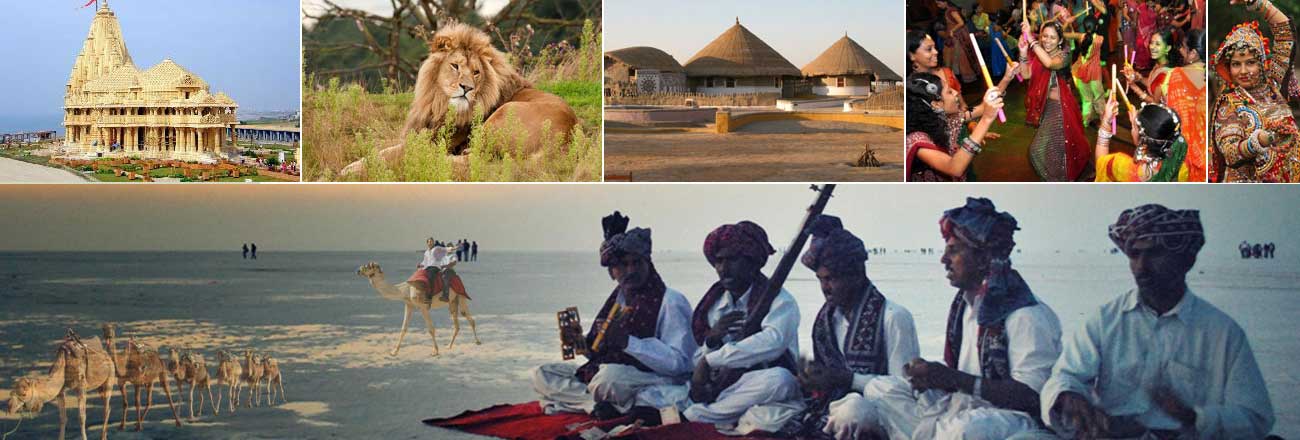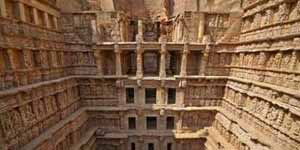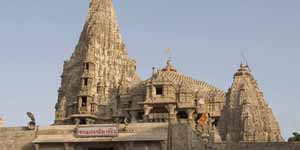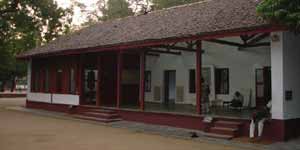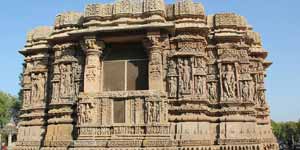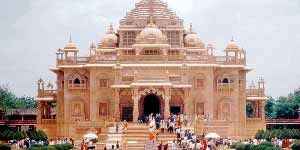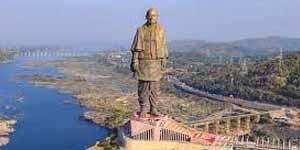
Sun Temple Modhera
The Sun Temple is a Hindu temple dedicated to the solar deity Surya located at Modhera village of Mehsana district, Gujarat, India. It is situated on the bank of the river Pushpavati. It was built after 1026-27 CE during the reign of Bhima I of the Chaulukya dynasty. No worship is offered now and is protected monument maintained by Archaeological Survey of India. The temple complex has three components: Gudhamandapa, the shrine hall; Sabhamandapa, the assembly hall and Kunda, the reservoir. The halls have intricately carved exterior and pillars. The reservoir has steps to reach the bottom and numerous small shrines.
Architecture
The brilliant architecture of the temple is one of its own class. The temple encompasses three different yet axially-aligned and integrated constituents. As per the Konark Temple, this shrine is designed in a manner, so that the first rays of the Sun cast on the image of the Lord Surya. The Temple was plundered by Mahmud Ghazni; still the architectural grandeur is not vanished. No matter what is left, yet the remnants provide a great enchantment to behold.
Erected on a high platform, the Temple appears majestic with its grand structure. However, the spires are out of the scene, but the 'Toranas' (Archways) that lead to the main halls overshadow the absence of spires or shikhars. The exterior walls are engraved with intricate carvings, boasting about the mastery of art in those times. Every single inch of the structure is covered with the sculptural patterns of Gods, Goddesses, birds, beasts and flowers. Actually, the Sun Temple is divided into three parts namely Surya Kund, Sabha Mandap and Guda Mandap.
Surya Kund
Surya Kund is a deep stepped tank in the front of the temple. The tank was named after the Lord Surya (Sun God). In the earlier times, this 100 sq meter rectangular tank was used to store pure water. The devotees used to take a halt here for ceremonial ablutions before moving towards the temple. Not less than 108 shrines mark the steps of this tank including the shrines dedicated to Lord Ganesha, Lord Shiva, Sheetala Mata and many others. In front of this tank, a huge 'torana' (archway) leads to the Sabha Mandap.
Sabha Mandap
Literally, Sabha Mandap refers to an assembly hall where religious gatherings and conferences are conducted. This hall is open from all the four sides and has 52 delicately carved pillars. The intricate carvings depict scenes from the Ramayana, Mahabharata (Indian Epics) and scenes from the life of Lord Krishna. In order to get into the Sanctum Sanctorum, one has to cross the passage with pillars and arches.
Guda Mandap
Guda Mandap is the sanctum sanctorum that is supported by a lotus-base plinth. Once, this hall used to house the idol of the Sun God. The designing of the hall was done in a way, so that the idol gets the first glimpse of the Sun at equinoxes. However, the idol was plundered by Mahmud Ghazni yet the walls represent the Sun God in his 12 different facets of each month. The carved walls also depict the aspects of human life like the vicious circle of birth and death. The façade of this hall was renovated in the recent years, despite the fact that the roof over the Guda Mandap had already been shattered.
Festival
Modhera dance festival is the major festival that is observed by the Sun Temple. This dance festival is organized to keep the Indian traditions and culture alive. It is held in the third week of January every year. The classical dance forms in the premises of this temple revive the imperial ambiance during the period. Gujarat Tourism organizes this event to promote tourism at this place.
Monuments in Gujarat
Monuments in Gujarat The words history, heritage, culture and traditions describe the true glory of Gujarat, one of India's very well-known and truly effervescent states. Each nook and corner of Gujarat, steeped in the past, bears witness to the richness and royal grandeur once enjoyed in this region. Today some of the most unique places that testify to the glorious days gone by are none but Gujarat 's timeless forts and monuments.Gujarat forts and monuments make up a very significant part of Gujarat's many types of tourist attractions. In reality it won't be an overstatement to say; Gujarat 's beauty has reached a unique height with these in the background. Modern buildings built in the middle of the old today appear to exemplify the idea of tradition and step forward in time bringing along old principles. The synthesis of old and modern has fooled every heart and mind with precision. In fact, this combination not only speaks of Gujarat's grandeur but also expresses some of India's sublime values, for which it is recognised throughout the world.
You will come across many fascinating details about them while visiting the forts and monuments in Gujarat on your trip to Gujarat. Not only do you enjoy the undying sagas associated with these sites but also the sophisticated architectural styles in which they boast. These sites gasconade's art work is the sight to feast your eyes on.
Looking closely at Gujarat forts and monuments, you can find that most of these sites exhibit a mixture of Hindu, Islamic and European architectural styles. The time of wooden furniture forming an important ingredient in these areas. You'll enjoy every bit of your tour to Gujarat forts and monuments, to state laconically.

